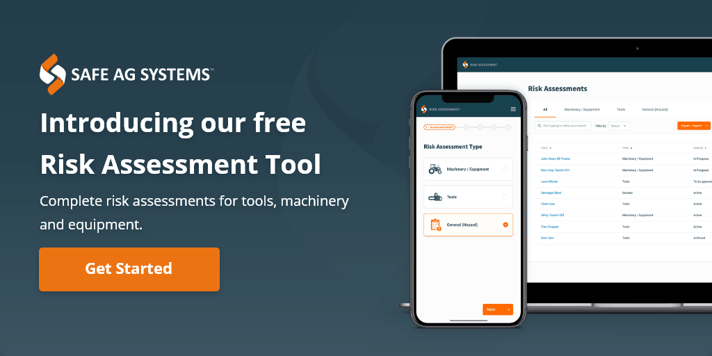Streamline hazard identification with our free risk assessment tool.
Recently I heard someone say they don’t need to do a risk assessment on something as they have a safe work procedure. That got me thinking – what is the difference?
My first reaction is to say risk assessments are very different from safe work procedures – and they are. However, I can see how this person thought that they were kind of the same thing.
Let’s remind ourselves of the basic legal (and moral) obligation of any business – to keep people as safe as possible so they get to go home to their loved ones each day. And yes, that includes you. To achieve this, you need to know what can harm someone and do something about it. Risk assessments are the smart way to do this.
Risk assessment is a process, usually documented. The purpose of a risk assessment is to take the time to consider something that has the potential to cause harm (a hazard), the degree of harm that could result (risk), then find ways to eliminate the hazard or mitigate the risk. This process has been discussed in our previous blog (S.A.F.E.).
A risk assessment provides detailed and specific information around how to control each identified risk. Each risk may have different controls, and it is important to understand what needs to happen to keep people safe. Risk assessments can be longer, depending on the format and the level of detail. A good risk assessment should go in to a fair bit of detail. For example, when doing a risk assessment on machinery or tools, you should consider the likelihood of things all kinds of risk including e-stops, entanglement, crushing, cutting or shearing, being struck by objects, contact with high pressure fluids, electrical, burns, slips trips and falls, ergonomics, confined spaces etc.
When you know the risk and implement controls, this is where a Safe Work Procedure (SWP) comes in to play. A SWP is an administrative control – very important but less effective than higher controls such as eliminating a hazard.
SWPs documents the end result of your risk assessment. It should include PPE to be used for a task or when using that machine, as well as pre-start checks, operational safety, shut-down processes, and what risks to be aware of.
SWPs are generally much shorter documents, often with PPE images, dot points and 1-2 pages maximum. SWPs must be easy to read and follow. These are used by workers on a more regular basis.
Having risk assessments and SWPs in your safety management system is vital. And risk assessment is now easier than ever with Safe Ag Systems free Risk Assessment tool.
Topics: Risk Assessments
Disclaimer: Content on this website may be of relevance to users outside of Australia, but content links and examples are specific to Australia. Please check with your local authority for your country and industry requirements.












